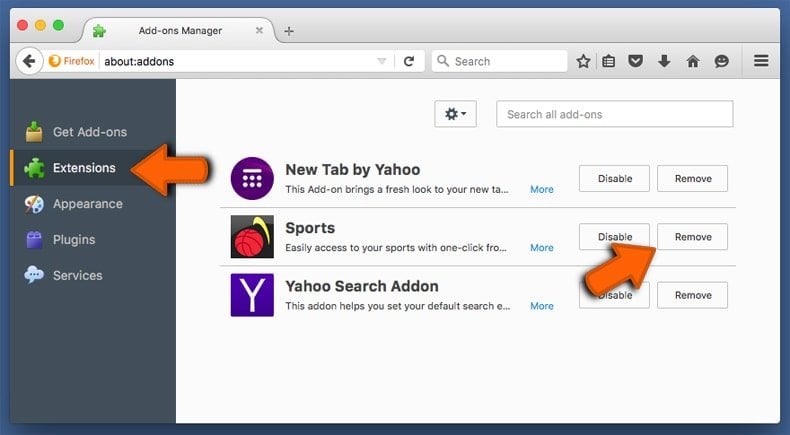Internet Plug Ins Mac In Library
Important:This document may not represent best practices for current development. Links to downloads and other resources may no longer be valid.
Web browser plug-ins are considered extensions to existing web browsers. By installing them locally on your machine, you can “teach” your web browsers to support alternative content types—perhaps even custom types you design yourself—or to perform additional tasks that a ready-made browser cannot do.
The WebKit framework natively supports the Netscape-style plug-in API, which is based off a common cross-platform API. This API is described futher in Creating Plug-ins with the Netscape API.

- Mar 24, 2019 Mac OS X. Mac OS X plug-ins are found according to the section How Gecko Finds Plug-ins.Plug-ins are identified by file type NSPL. To determine the supported MIME types, Gecko first checks for registry information in the plugins Info.plist. If nothing is found there, Gecko checks for an NPGetMIMEDescription entry point, and will use the information returned by this function.
- Nov 09, 2011 Yes, These are all from the /library/internet plug-ins folder; Disabled Plug-Ins Flash Player.plugin ContentUploaderPlugin.plugin flashplayer.xpt iPhotoPhotocast.plugin Flip4Mac WMV Plugin.webplugin Flip4Mac WMV Plugin.plugin npdivx.xpt npUpload.xpt DivXBrowserPlugin.plugin JavaPluginCocoa.bundle NP-PPC-Dir-Shockwave QuickTime Plugin.webplugin.
- If you are the type of user who has installed many free Waves plugins in order to test them and only then make a purchase, this article will be helpful for you. We will explain how to get rid of Waves plugins, how to uninstall plugins on a Mac using a special tool for all types of Mac extensions, as well as how to uninstall Waves Central entirely.
- The AdobePDFViewer plug-in is used to display PDF files in Safari using Acrobat and Reader. This plug-in is installed as part of the Acrobat X or Reader X installation. The location of this plug-in is: /Library/Internet Plug-ins/AdobePDFViewer.plugin.
Go to: Mac HD/Library/Internet Plugins. Verify that the Flash Player.plugin and flashplayer.xpt files are not present. If it they are, trash them. Go to: Mac HD/Library/Internet Plugins/PepperFlashPlayer. Verify that PepperFlashPlayer.plugin and manifest.json files are not present. If it they are trash them.
Historical Note: Previous versions of Safari supported a WebKit–specific plug-in model based on Objective-C. This plug-in model is no longer supported in Safari for two main reasons:
WebKit plug-ins are closely tied to WebKit in such a way that the WebKit plug-in model could not be practically modified to support out-of-process execution (which is desirable for both security and stability reasons).
Most plug-ins in WebKit are based on the Netscape-style plug-in model because it supports non-WebKit-based browsers, and it allows you to share most of your code with the Linux and Windows versions of your plug-in.
Installing Your Plug-in
Plug-ins can be stored in one of two places on an OS X system:
Plug-ins stored in
/Library/Internet Plug-inscan be shared by all users on the computer.Plug-ins stored in
~/Library/Internet Plug-inswill be available only to the user whose home directory contains them.
In addition, the WebKit-based plug-ins can be stored inside the bundle of any application that uses the WebKit, by storing it in:
where AppName is the actual application’s executable bundle.
Plug-ins are generally reloaded on each application start.
Deploying Your Plug-in
Content that your plug-ins will view needs to be embedded within HTML. Most browsers do this with an EMBED tag, but others require the OBJECT tag. How to create library preference for mac 2017. For maximum compatibility, you can tune your page to support both. The example in Listing 1 is specific to the QuickTime plug-in provided by Apple, and you can tune these parameters to your own mode of business.
Listing 1 Embedding a movie into an HTML page
 Jan 12, 2020 You can access the hidden Library folder without using Terminal, which has the side effect of revealing every hidden file on your Mac. This method will only make the Library folder visible, and only for as long as you keep the Finder window for the Library folder open.
Jan 12, 2020 You can access the hidden Library folder without using Terminal, which has the side effect of revealing every hidden file on your Mac. This method will only make the Library folder visible, and only for as long as you keep the Finder window for the Library folder open.
The variables for the Active X controls will change based on your plug-in’s behavior. Read Apple’s HTML Scripting Guide for QuickTime tutorial for more information.
Internet Plug Ins Mac In Library Free

Internet Plug Ins Mac In Library System
Copyright © 2005, 2011 Apple Inc. All Rights Reserved. Terms of Use Privacy Policy Updated: 2011-05-17